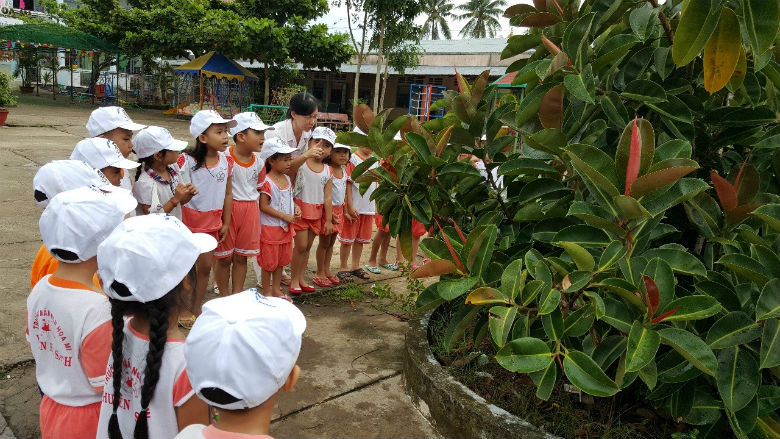Challenge
Early childhood education was once a neglected part of the Vietnamese education system and was often regarded as a child-minding service. Typically, young children were kept at home with untrained caregivers. Issues start when children go to preschool and there are not enough classrooms or teachers. And when they went to kindergarten, the schools did not provide appropriate educational settings for child cognitive and well-being development.
In 2011, the Early Development Index (EDI) assessment was implemented in Vietnam. The assessment covers five areas of child development: physical health and well-being, social competence, emotional maturity, language and cognitive skills, communication skills and general knowledge.
The result of the assessment found that one in four children who were enrolled in preschool (age 5) were lacking in ‘school readiness’. This meant that they weren’t ready for school, families weren’t ready to support their children's learning, and schools weren’t ready for children.
The results also showed that 45 percent of ethnic minority children were vulnerable to not being school-ready in contrast to 19 percent of non-ethnic minority children. ‘Vulnerable’ is defined as those children who are most at risk of facing increased negative outcomes (such as low school attendance) compared to the "average" child in their society. In this case, the share of vulnerable children was lower among those attending full-day preschool and who were provided lunch, as opposed to those attending only half-day without lunch.
Other factors that contributed to low levels of readiness was the absence of a preschool quality assurance system, preschool accreditation process, and poor teacher training, which often used out-of-date curricula. Ten percent of teachers received no training at all.
Approach
The School Readiness Promotion Project (SRPP) was designed to support the following elements of the government’s programs for Early Childhood Development:
- Expansion of full-day, full-year enrolment in preschools,
- Provision of lunch subsidies for poor and ethnic minority children to promote demand,
- Promotion of quality through more and better teacher training, the development of a quality assurance system and the establishment of an accreditation process; and
- Supporting policy measures that determine standards and authorize quality assurance systems that would guide investments in ECE and strengthen monitoring and reporting.
The results-based approach adopted by SRPP enabled the government to increase its financial commitment to ECE. As such, the government was able to monitor the impact of its funding commitment and target resources towards disadvantaged areas to achieve its goals of universal enrolment and improved school readiness.
Results
After four years, the program has achieved the following outcomes:
- The share of vulnerable five-year-old children has declined from the baseline of 24 percent in 2012 to 12.5 percent in 2015.
- The share of five-year-old children who benefit from full-day preschool has risen from 66 percent (2011) to 84 percent (2016).
- The number of preschools that were accredited with Quality Level 1 or above reached 34 percent in 2016. No preschools were accredited in 2012.
- More than 90 percent of ECE teachers and managers have completed compulsory professional development training programs. These training programs provided them with practical skills and knowledge on child-centered learning and teaching that would improve skills in language, cognition, socio-emotional, physical development, and communication.
Bank Group Contribution
The program was funded through a $100 million IDA credit; $95 million was disbursed when predetermined results were achieved and $5 million went into financed technical assistance for capacity building, program development and policy development.
Partners
The government is coordinating overall financing for ECE in the country by different development partners such as UNICEF, Save the Children International, and Plan International.
Moving Forward
SRPP successfully leveraged additional central and provincial government allocations for early childhood development, particularly for poor, budget-deficit provinces. Central and provinces treasuries will be obliged by government regulations to continue allocating sufficient resources to maintain these achievements.
The government monitors provincial performance through results indicators that are the same as the Disbursement Linked Indicators used by SRPP. However, further progress is needed in order to ensure that the most hard-to-reach groups of children have access to good quality preschool.
Beneficiaries
